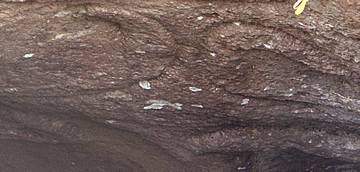


The south west of Sardinia, as in the rest of the island, has fascinating Roman and ancient historical sites to explore - the necropolis of Montessu is particularly intriguing.
Cagliari itself is home to an excellent archaeological museum and countless places to enjoy good food.
Related page:
Sardinia: Olbia to Oristano
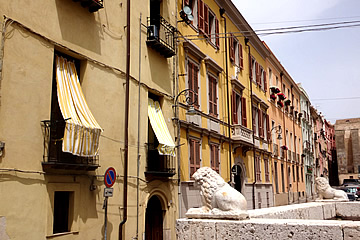
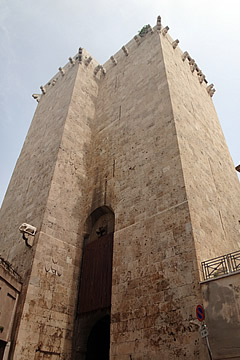
Long the island's capital Cagliari has remnants of two thousand years of history either on the streets or in its museums. The old citadel, now the Castello quarter, is high on a hill with the cathedral and city offices at the summit and surrounded by a defensive wall.
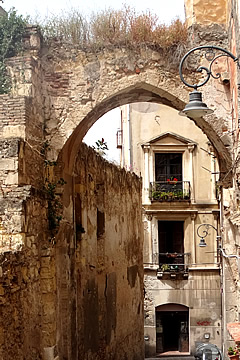
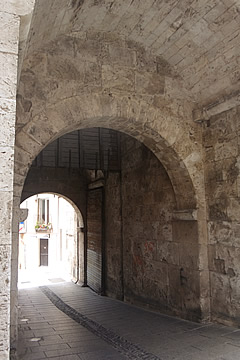
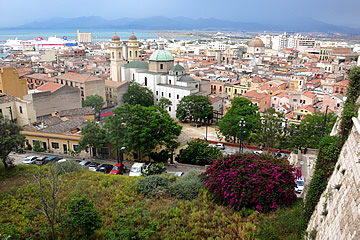
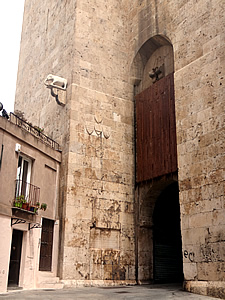
On the west side is the Torre dell'Elefante which was built in 1307 and, like the defensive walls, presents a sheer face to attackers. The internal portcullis can still be seen seated in its grooves at the centre of the interior of the gate above the road leading into Castello. A raised, spiked gate is also still in place at the entrance from the lower city. The inward side of the tower is open.
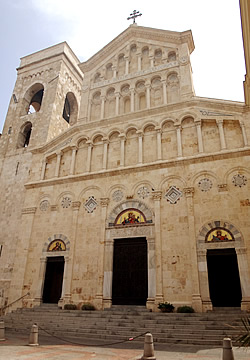
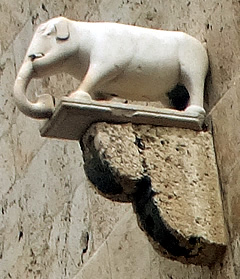
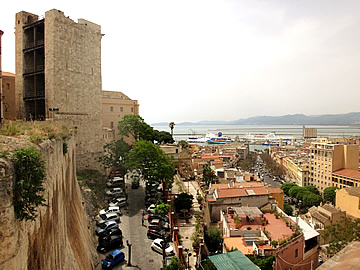
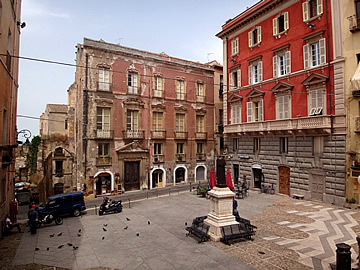
The civic and ecclesiastical buildings sit among a warren of narrow alleyways threading between tall buildings within the walls.
The cathedral was originally built in the thirteenth century but has undergone much remodelling. The facade is a twentieth century take on a typical arcaded Pisan Romanesque style and the interior, a mixture of Gothic and Baroque, does nothing for me at all, though there are some lovely 12th century carved marble lions and an impressive carving of St Michael casting devils into hell.
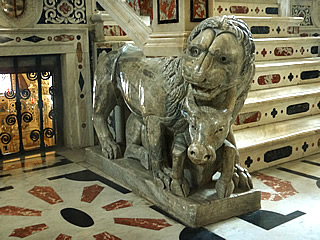
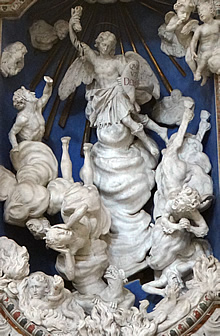
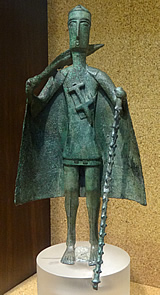
The Archaeological Museum is not too far from the cathedral and has some very interesting exhibits. I particularly liked the small bronze Nuraghic figures, mostly military in nature, and the little boats, indicative of the seafaring nature of the people, which may have been used as sanctuary lamps.
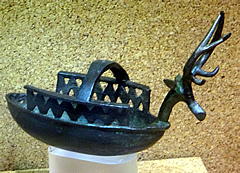
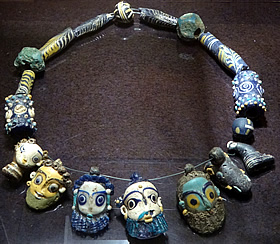
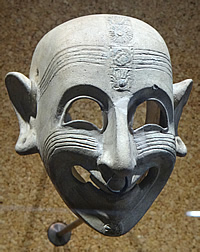
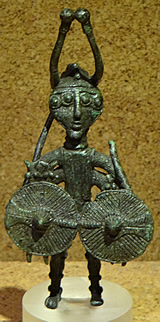
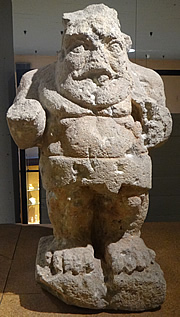

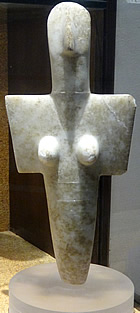
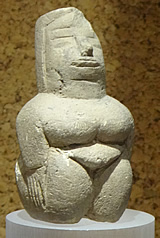
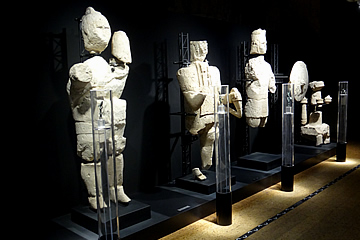
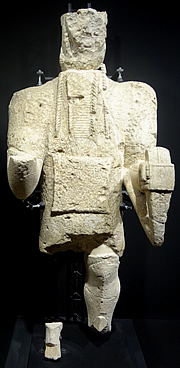
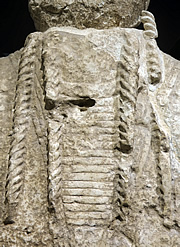
There are some magnificent remnants of large Nuraghic stone statues, the Giants of Mont'e Prama, discovered in 1974 along with models of nuraghe.
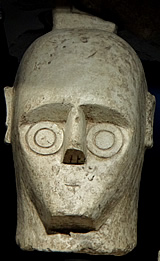
Several statues have been assembled from the fragments of of over forty that were found. They stand up to two metres tall and include archers, warriors and boxers.
There is a statue of an archer with some fine carved detail.
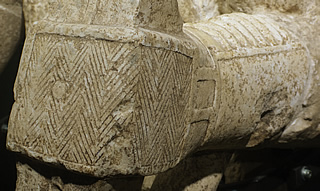
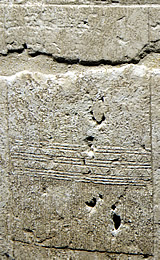
The heads with their dual concentric circle eyes are particularly arresting. These sculptures are Nuraghic but their exact age is unkown, certainly hundreds of years before the birth of Christ.
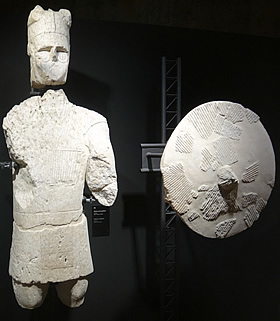
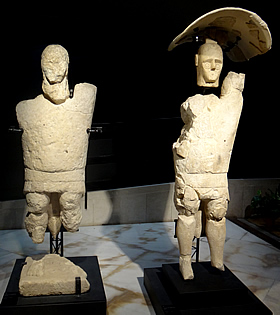
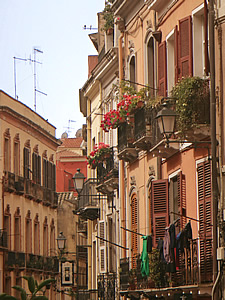
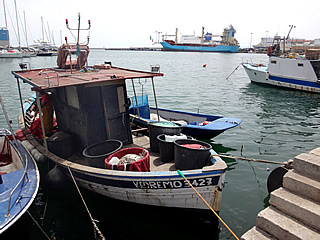
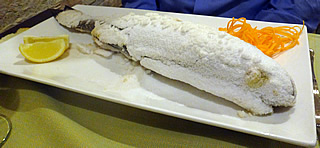
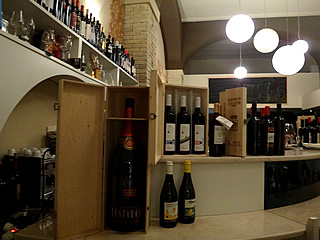
The area down to the harbour south of Castello is full of narrow streets and bounded by a couple of major roads: the Via Roma along the harbour and the Largo Carlo Felice on the west side heading north. It has many restaurants, cafés and bars, most with tables on the pavements and piazzas and we had some great food and wine here, notably in Inu Enoteca and Sapori di Sardegna.
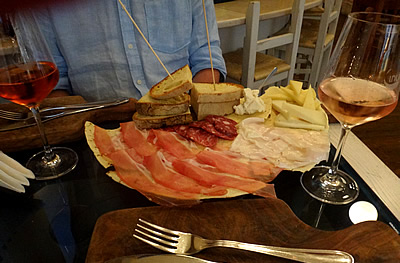
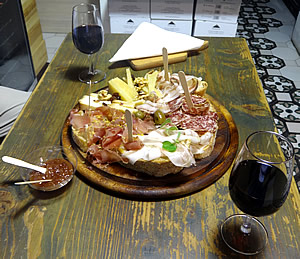
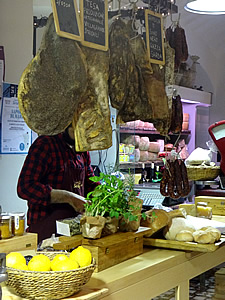
Sapori di Sardegna is a fabulous delicatessen selling Sardinian food, but they will also prepare a fantastic meat and cheese lunch for you. It was served with a fig "jam" and two glasses of Mamuthone Cannonau di Sardegna - a fabulous mouth-filling red. If you want to buy meats or cheeses they will vacuum-pack them for the trip home.
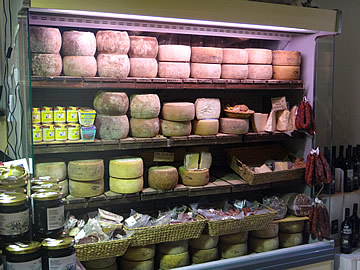
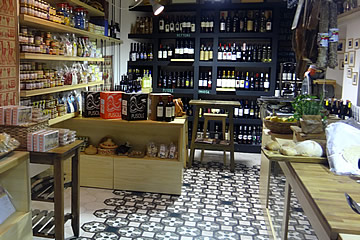
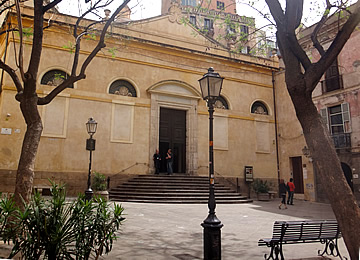
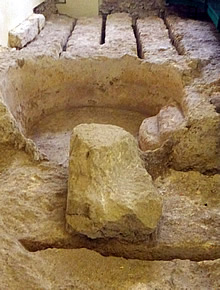
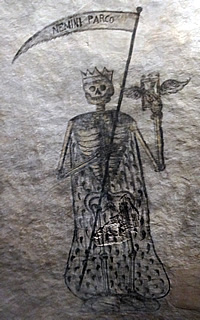
The church is renowned for the 17th century crypt and its images of Death but also has a rare example of an early baptismal font. This one dates from the fourth century and is a simple pit carved from the rock with steps leading down - baptism would have involved full immersion.
Steps lead down from the body of the church to a fair-sized barrel-vaulted room with a second room off to the side.
The larger room is painted in black and white with a great image of Death on the ceiling.
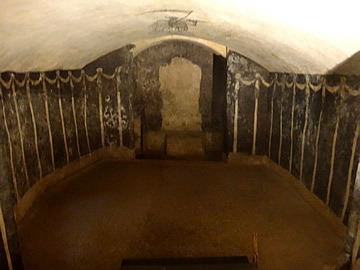
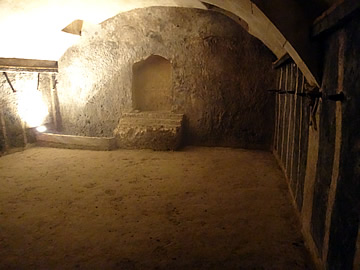
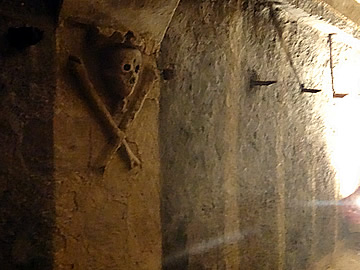
The second room is smaller, also with a vaulted ceiling, and has wonderful stone skull and crossbone sculptures.
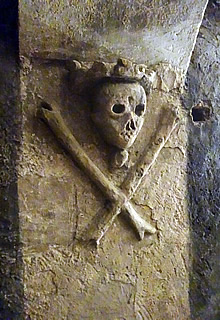
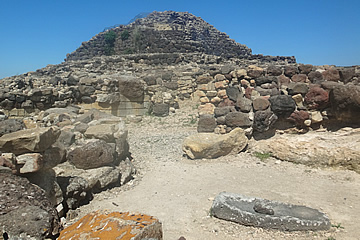
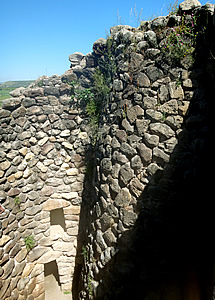
North of Cagliari, Su Nuraxi was the most complex and impressive nuraghic settlement that we saw in Sardinia.
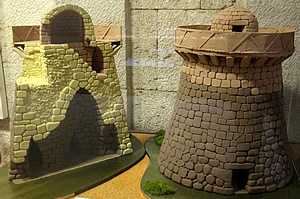
The central tower, once over 18m high, dates from the middle Bronze Age, around the 16th or 15th century B.C. Some time around the 13th century B.C. a wall and four towers were built to enclose the central tower and a courtyard, though the dating is not sure.
The central tower consisted of three "domed" rooms, one on top of another and its walls were thick enough to enclose a staircase.
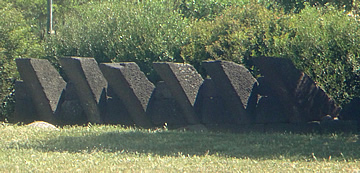
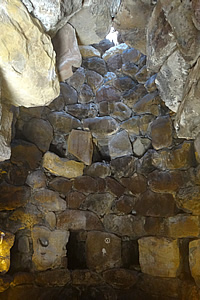
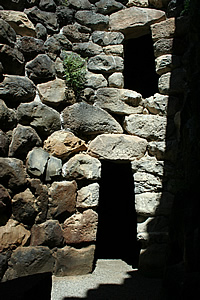
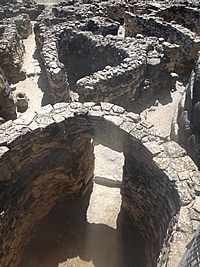
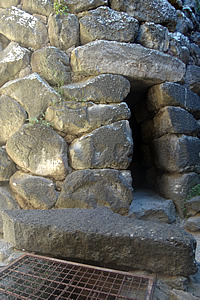
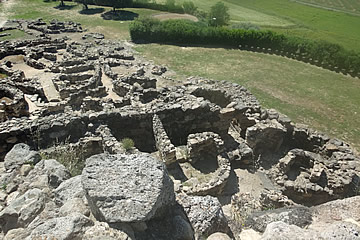
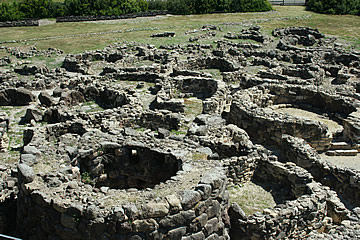
In the following two to three hundred years the walls were strengthened and surrounded by a second wall incorporating more round towers. The space between the two walls was occupied by a number of buildings and outside the second wall was an extensive array of some 200 houses and communal buildings.
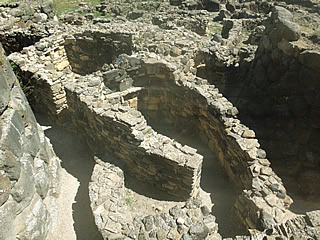
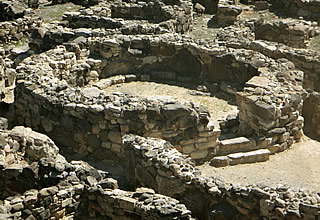
The Nuraghic village dates mostly from between the 10th and 6th centuries B.C. when the central defences were already in a state of decay, perhaps this was a time of much greater peace and security.
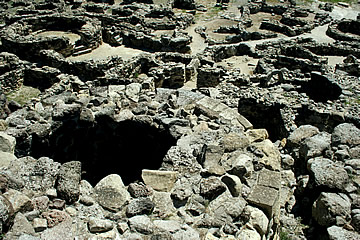
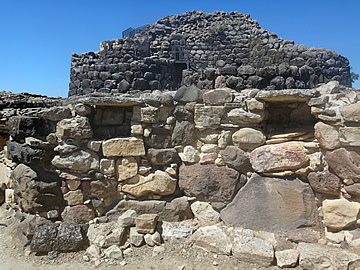
Visits to the site can only be made with a guide. Though we normally prefer to wander on our own, a guide is essential here as it's quite dangerous and there is some tricky clambering up and through the stonework to reach the inner courtyard.
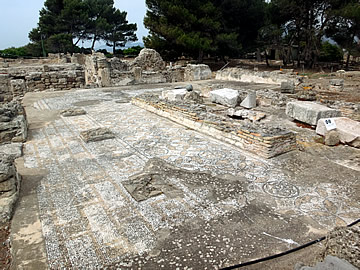
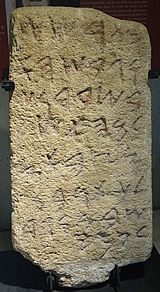
The South west coast was occupied first by Phoenicians in the 9th century B.C. followed by Carthaginians and Romans. Nora is the most important of the archaeological sites of the region. Dominating the Gulf of Cagliari it was strategically well-placed and prospered for over a thousand years. In 238 B.C. the Romans made it the provincial capital for the whole of Sardinia.
A guide was mandatory when we visited but the group wasn't too large and he was pretty good.
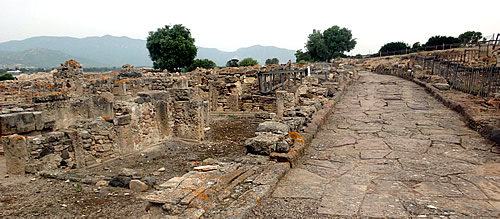
Though quite large in extent little has survived so it isn't the greatest set of Roman remains we've seen - Pompeii & Herculaneum, the amazing Villa Romana on Sicily spring to mind immediately - but it has a lovely situation. Here was found the Phoenician stone inscription of the first recorded use of the name "Sardinia" which is now in the Archaeological Museum in Cagliari.
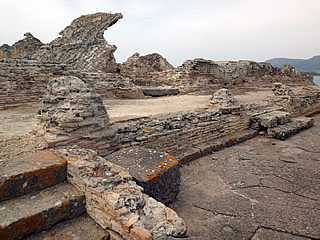
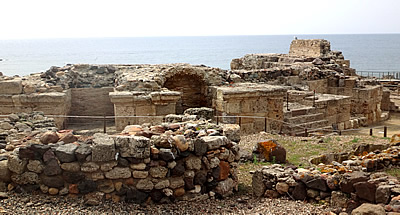
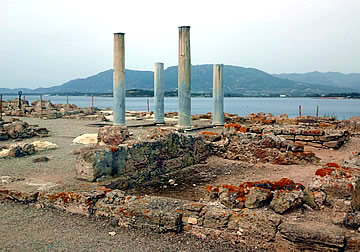
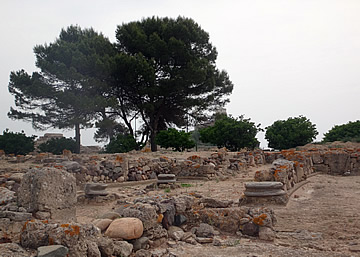
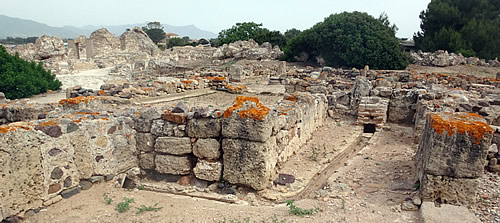
There are some nice mosaics still in situ which helps with vsualising the original rooms - these mosaics were walked on by the owners of the villas, seen by them and their guests every day. One can imagine how beautiful the rooms must have been with their expansive views over the sea.
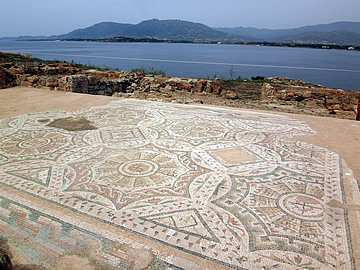
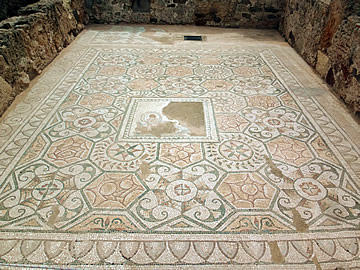
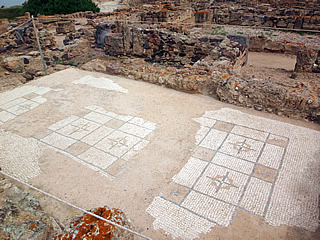
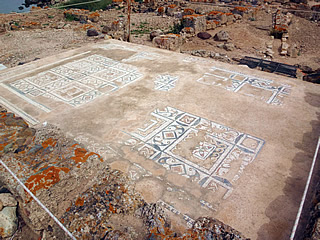
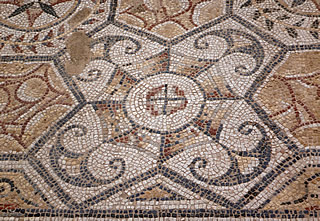
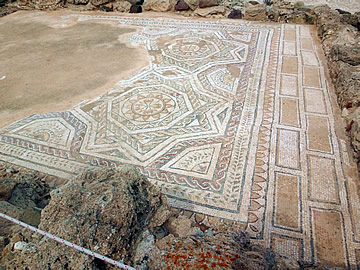
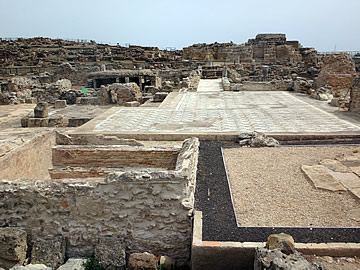
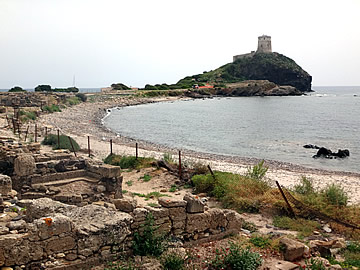
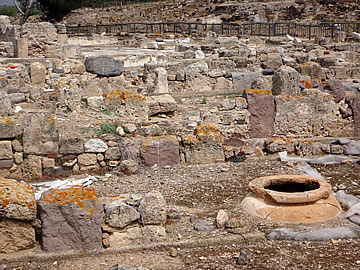
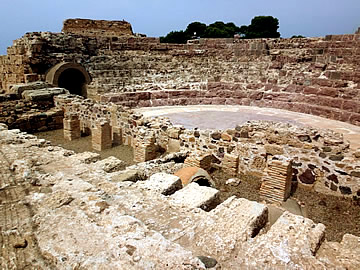
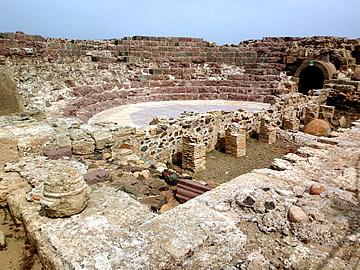
The small theatre overlooks the sea and it must have been very pleasant, with cool sea breezes, to see a performance here as the sun went down. Several large empty jars were placed under the stage to amplify sounds.
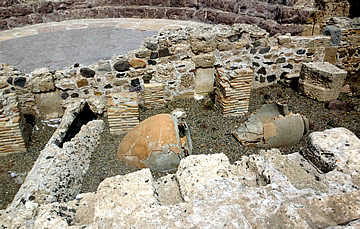
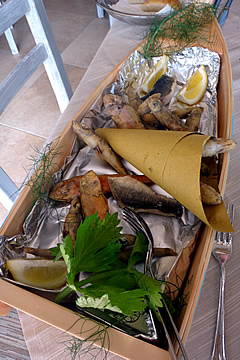
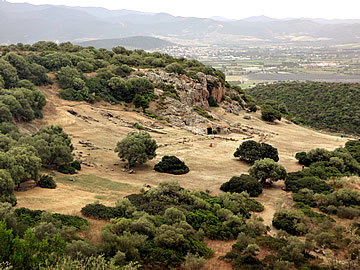
Before tackling Montessu we had lunch at Crar' e Luna just west of Chia. It serves excellent fish - numerous different types.
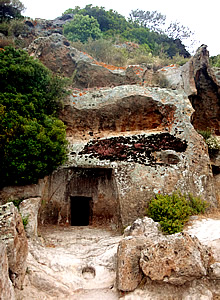
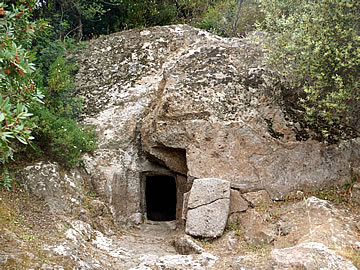
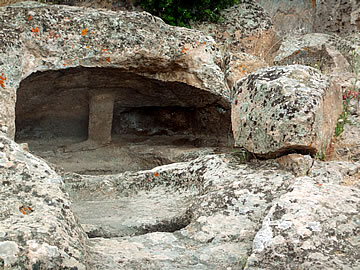
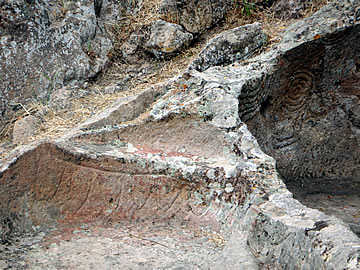
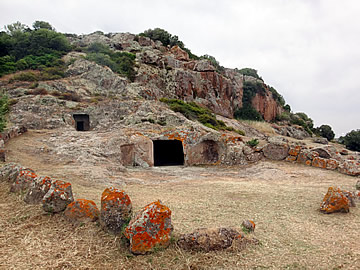
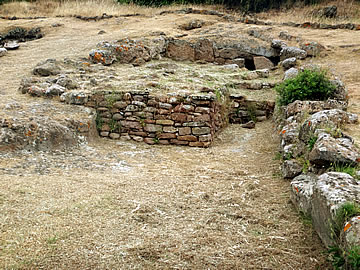
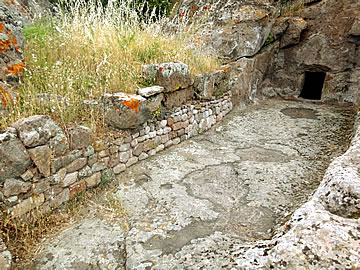
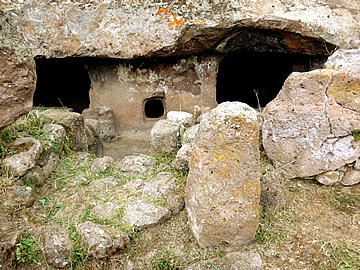
The prehistoric necropolis of Montessu lies 2km north of Villaperuccio, spread out on the sides of a valley which forms a natural amphitheatre facing the sea. It consists of about 40 Domus de Janus or Fairy Houses - artificial caves acting as tombs - of the Ozieri people, dating from 4000-3000 B.C. Some symbolic sacred decoration such as spirals can still be seen on some of the tomb walls.1
There are symbols associated with a Mother Goddess and a Bull God represented by double horns. The spiral may represent the concept of life after death.
The entrances are carefully carved, some severely rectangular in shape
It makes for a good and interesting walk and I think it's possible to have a guide if you wish, though it's not difficult to find your way around the site.
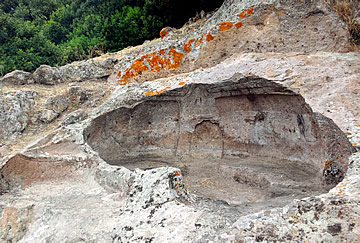
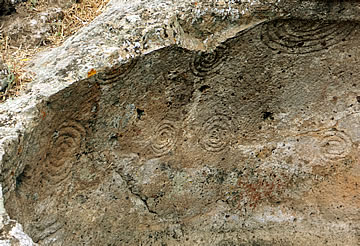
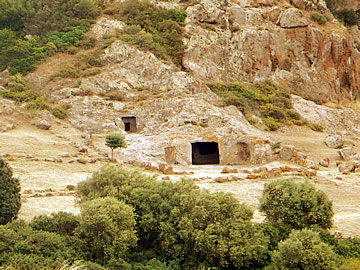
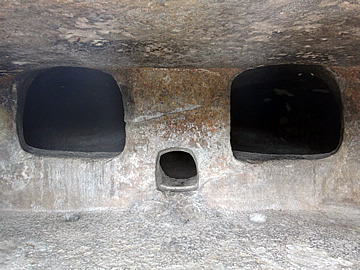
There are two types of shape for the burial caves: one is roughly circular with curved chambers and ceilings and a small vestibule, the second is rectangular with flat ceilings and usually approached by a path carved from the rock and lined with stones or perhaps even built walls, rather like two different architectural styles.
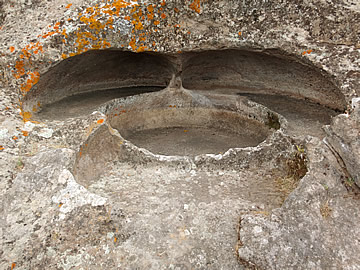
Sa Cresiada or the Little Church tomb is another quite complex architectural survival. Its vestibule is sunken and like the Cave of Pigs its back wall - the front wall of the burial chamber - has three "entrances".
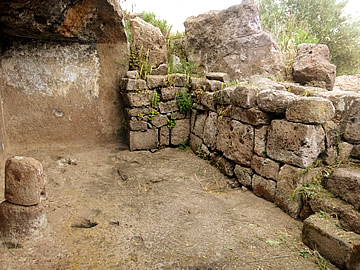
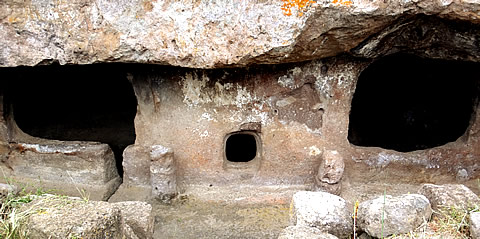
On either side of the central smaller hole in the vestibule are the remains of a small pillar.
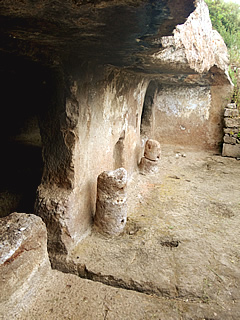
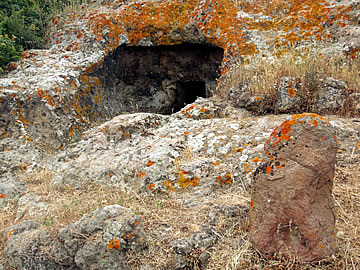
The quite elaborate tombs were almost certainly reserved for more prestigious burials. There seem to be numerous examples of more austere burial chambers.
